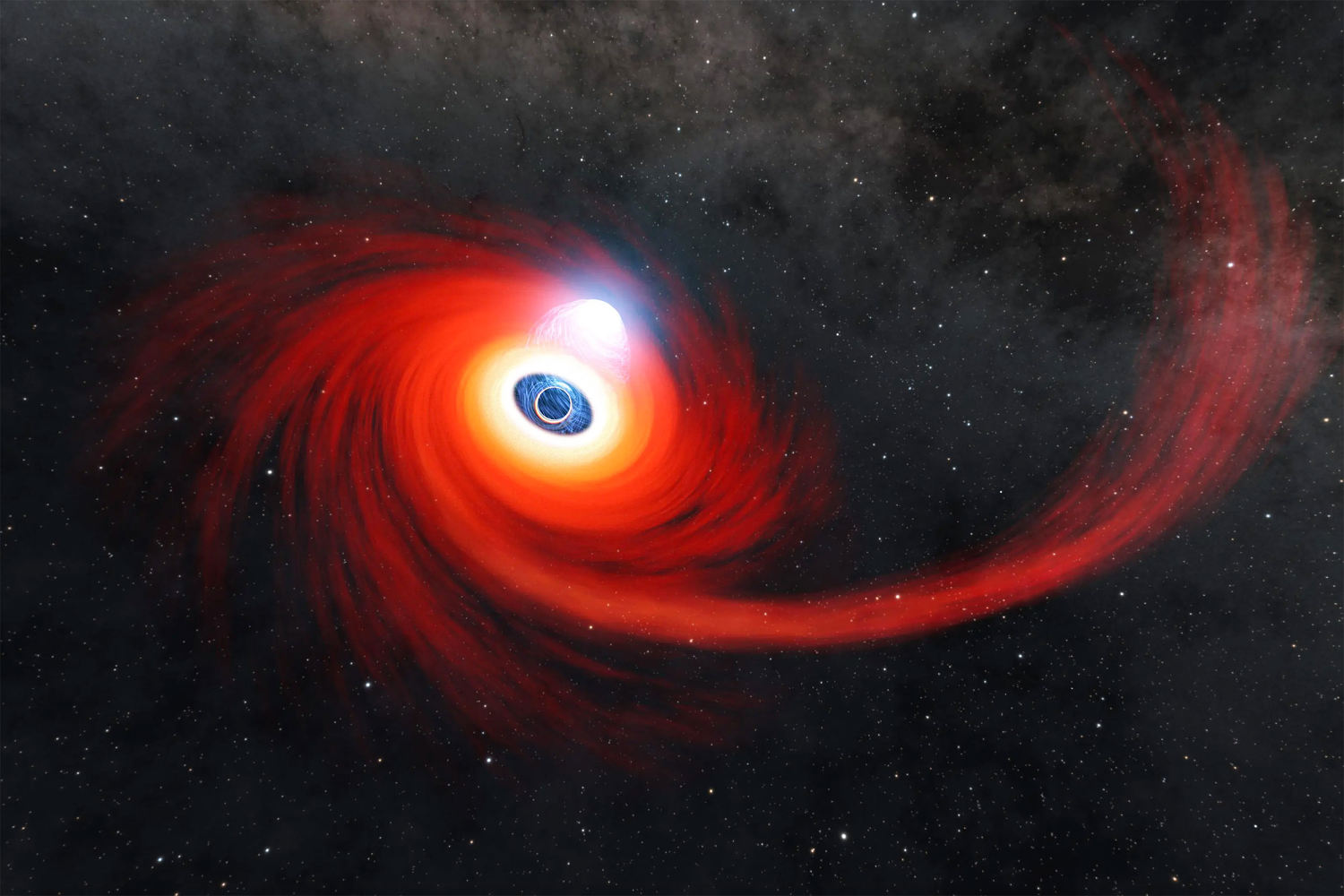
The vast emptiness of space is growing emptier one star at a time.
That’s because 80 billion lightyears from Earth, three cosmic beasts are devouring stars ten times the size of the sun.
In a new study by the University of Hawaii, among others, astronomers scouring through NASA and European Space Agency’s data said they had discovered three supermassive black holes. Those behemoths feast on stars of such a size that make the one at the center of the solar system look like a light snack.
The explosions those scientists have recorded, which happened when those black holes shredded and sucked up the fabric of those stars, are the largest since the big bang that created the universe.
“What I think is so exciting about this work is that we’re pushing the upper bounds of what we understand to be the most energetic environments of the universe,” Anna Payne, a staff scientist at the Space Telescope Science Institute and a co-author of the study, said in the NASA article.
Black holes are astronomical objects invisible to the human eye. They have a gravitational pull so strong that they swallow everything, including light. A supermassive black hole is the biggest of all black holes, sitting at the center of galaxies like the one at the heart of the Milky Way slowly sucking planets and all other matter toward it.
When a star gets trapped in the pull of a supermassive black hole, it can disintegrate with a spectacular explosion in a cosmic event that scientists in a new study published this week in the journal Science Advances call “extreme nuclear transient.”
“These events are the only way we can have a spotlight that we can shine on otherwise inactive massive black holes,” University of Hawaii graduate student Jason Hinkle said in a separate NASA article.
Hinkle is the lead author of the new study that describes for the first time two such events that took place over the past decade.
Two of the three supermassive black holes were detected in 2016 and 2018 by an ESA mission and are documented for the first time in the study. The third, nicknamed “Barbie” because of its catalog identifier ZTF20abrbeie, was identified in 2020 by a Caltech observatory in California and subsequently documented in 2023.
The blasts are so powerful that the only cosmic event larger in magnitude has been the big bang that sparked the dawn of the universe.
Unlike in other stellar explosions, though, the way X-ray, optical light and ultraviolet rays dimmed and brightened in these incidents made it clear this event was a “black hole ripping a star apart,” the NASA article said.
NASA says black holes actually brighten during these cosmic events and that brightness lasts for several months.
That brightness has given scientists a new way to find more black holes in the early distant universe. When astronomers peer into space, they are looking back in time because the further away they look, the older the light is reaching them — the light reaching Earth from the sun, for example, is eight minutes old.
“We can take these three objects as a blueprint to know what to look for in the future,” Payne said.








